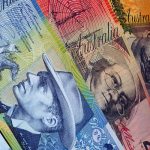US dollar slipped lower against its Canadian counterpart on Wednesday, after the ADP Research Institute reported that employers in the United States added fewer than expected job positions in October, which boosted the case that the Federal Reserve will probably delay the reduction of its monetary stimulus until early next year.
Having reached its highest point since September 6th at 1.0473 during the Asian trade, USD/CAD fell to a session low at 1.0441 at 11:35 GMT, after which consolidation followed at 1.0450, still down 0.18% for the day. Support was likely to be received at October 29th low, 1.0426, while resistance was to be met at September 6th high, 1.0501.
Earlier on Wednesday the Automatic Data Processing Inc. (ADP) said in a report that private sector in the United States added fewer than expected jobs in October, 130 000 instead of 148 000. September’s figure has been revised down to 145 000 new jobs from 166 000 previously. Analysts use this indicator as a benchmark for the official non-farm payrolls data, which is scheduled for release next week.
In addition, the index of consumer prices in the United States was reported to have climbed slowly in September, as this underscored a moderate inflationary pressure, which, alongside the weaker than projected employment data, may add to the case that the Federal Reserve Bank will delay its plans to taper stimulus this month. The consumer price index (CPI) demonstrated a 0.2% advance in September compared to a month ago, meeting preliminary estimates, after the 0.1% gain in August.
Core consumer price index, which excludes volatile components such as prices of food and energy, climbed 0.1% in September on a monthly basis, retaining the rate of increase showed in August. Annual consumer prices rose to 1.2% in September, again in line with expectations, while annual core consumer inflation increased to 1.7% during the same month, slightly below projections of a 1.8% rate.
This report again emphasized that inflation rate in the country remained below the 2% objective, pursued by the central bank and considered as providing price stability. What is more, however, it suggested that consumer expenditures still remained not sufficiently strong in order to provide a more accelerated pace of economic recovery. Consumer spending appears to be the main driving force behind US economic growth during the first six months of the year. A suppressed rate of inflation is a key factor for continuing the course of an accommodative monetary policy, as became clear at Feds meeting in September. As long as no signals for rising inflationary pressure are present and the unemployment rate in the US remains at current high levels, upholders of a more loose monetary policy will likely support the current pace of central banks stimulus program.
“The dollar sold off against all the Group of 10 currencies overnight,” said David Bradley, director of foreign exchange trading in Toronto at Scotia Capital Inc., a unit of Bank of Nova Scotia, by phone from Toronto, cited by Bloomberg. “There is a certain amount of uncertainty, not over rates, but over tapering talk. After recent U.S. data and the government shutdown, a lot of the market thinks tapering is off the table until at least March.”
Meanwhile, yesterday Royal Bank of Canada Governor Steven Poloz said that the bank has become more concerned that inflation rate in Canada remained on low levels, while risks of an additional drop in prices have become of greater significance. Concerns arose also over weak Canadian exports.
Elsewhere, the loonie, as Canadian dollar is also nicknamed, was lower against the euro, with EUR/CAD cross rising 0.08% on a daily basis to trade at 1.4404 at 13:26 GMT. It became clear that German consumer prices decreased unexpectedly in October to reach the lowest annual level since April. The CPI fell 0.2% in October on a monthly basis, which lowered the annual rate of inflation to 1.2% during the same month from 1.4% in September. Experts had anticipated that the annual inflation rate of 1.4% will be retained also in October.
GBP/CAD pair was steady, gaining 0.05% to trade at 1.6809 at 13:27 GMT.





